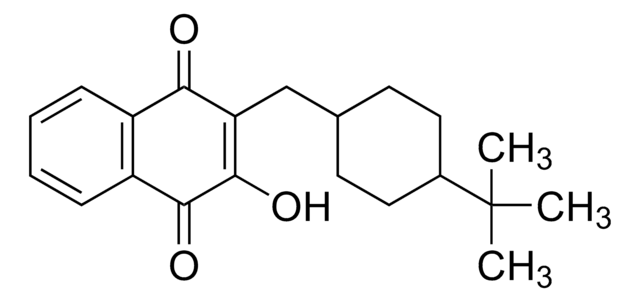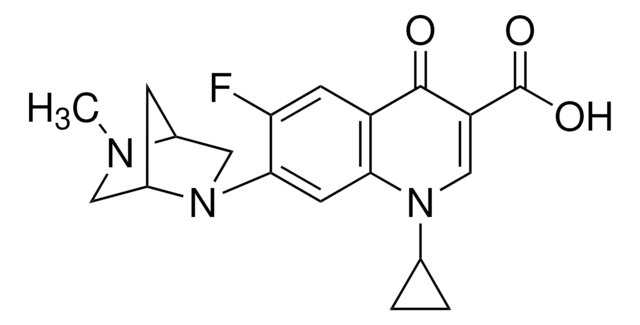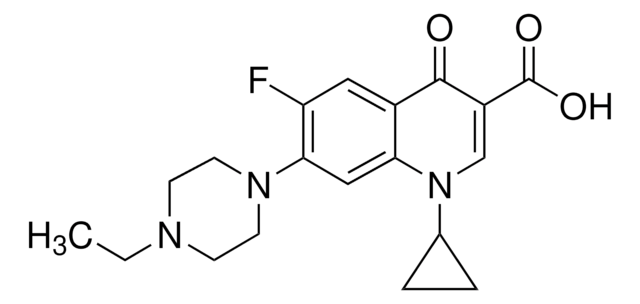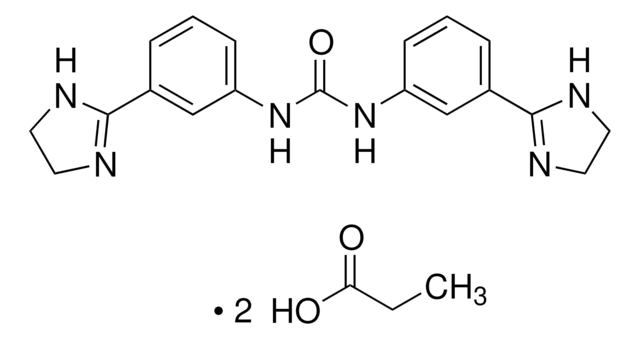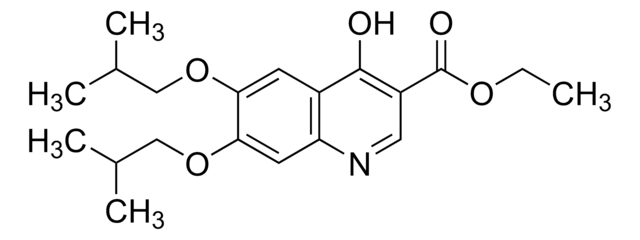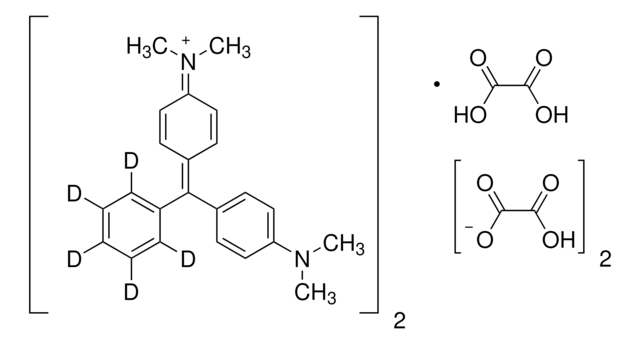Wichtige Dokumente
32154
Buparvaquon
VETRANAL®, analytical standard
Synonym(e):
2-[(4-tert.-Butylcyclohexyl)-methyl]-3-hydroxy-1,4-naphthochinon, 2-[[4-(1,1-Dimethylethyl)-cyclohexyl]-methyl]-3-hydroxy-1,4-naphthalindion
About This Item
Empfohlene Produkte
Qualität
analytical standard
Qualitätsniveau
Produktlinie
VETRANAL®
Methode(n)
HPLC: suitable
gas chromatography (GC): suitable
Anwendung(en)
forensics and toxicology
veterinary
Format
neat
Lagertemp.
2-8°C
SMILES String
CC(C)(C)C1CCC(CC1)CC2=C(O)C(=O)c3ccccc3C2=O
InChI
1S/C21H26O3/c1-21(2,3)14-10-8-13(9-11-14)12-17-18(22)15-6-4-5-7-16(15)19(23)20(17)24/h4-7,13-14,24H,8-12H2,1-3H3
InChIKey
KLLIVCPQDTYMLC-UHFFFAOYSA-N
Suchen Sie nach ähnlichen Produkten? Aufrufen Leitfaden zum Produktvergleich
Anwendung
Rechtliche Hinweise
Sie haben nicht das passende Produkt gefunden?
Probieren Sie unser Produkt-Auswahlhilfe. aus.
Lagerklassenschlüssel
11 - Combustible Solids
WGK
WGK 3
Flammpunkt (°F)
Not applicable
Flammpunkt (°C)
Not applicable
Hier finden Sie alle aktuellen Versionen:
Besitzen Sie dieses Produkt bereits?
In der Dokumentenbibliothek finden Sie die Dokumentation zu den Produkten, die Sie kürzlich erworben haben.
Unser Team von Wissenschaftlern verfügt über Erfahrung in allen Forschungsbereichen einschließlich Life Science, Materialwissenschaften, chemischer Synthese, Chromatographie, Analytik und vielen mehr..
Setzen Sie sich mit dem technischen Dienst in Verbindung.